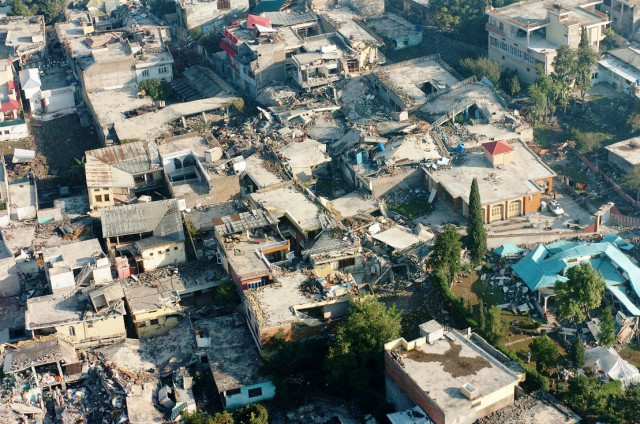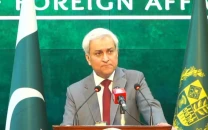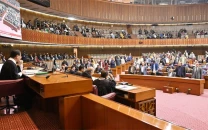Rehabilitation, please?: Political turmoil keeps Muzaffarabad in the pit
The city is lined with pot-holed roads, and majority of homes are shelters provided by foreigners.

For many in this city, October 8th is a day of mourning but some do more than just mourn. They organise rallies and ask the government to fulfill its promise of building Muzaffarabad ‘better than before.’
One such pressure group is Tehreek-e-Tameer-e-Nau, comprising lawyers, teachers, traders and political workers.
“We are going to light up lanterns in daytime, and march to the United Nations office and voice our concerns,” says Shaukat Ganai, president of the group formed in 2009 to question the government’s reconstruction efforts. He says the march is symbolic to send the message of ‘darkness in day.’
“Out of 97 announced projects, work on just seven has been done,” he alleges. “With constant government changes, and disputes in the ruling party, the Muslim Conference, we witnessed four prime ministers shuffled in last five years. So there was no focus on development, just politics.”
Perpetually under-construction
That is fairly obvious if one travels around Muzaffarabad. The city is lined with pot-holed roads, while most homes are shelters provided by the Saudis, almost five years ago. Bridges are still under-construction, with work-in-progress signs almost everywhere, six years later.
Locals say the only completed projects are a residential complex, occupied mostly by NGO workers, and a hospital being run by the Pakistani military. Both these projects were completed by foreign countries.
“When the international community could rebuild in just a few years, why couldn’t our government do anything for us?’ says Zahid Hussain, a local resident and political worker who has been part of several agitations against the lack of government interest in rebuilding the city.
Bleak outlook
Raja Farooq Haider, who was the prime minister of AJK in 2009 but was ousted in 2010, agrees.
“We had internal conflicts in our party and the fall out affected the earthquake rehabilitation,’ he says, but blames Sardar Attique Ahmed Khan, the prime minister of AJK in 2006.
“Attique Ahmed diverted the aid money to the new federal government in 2008 under pressure, and that is why the rehabilitation process could not be completed. Projects stopped halfway and now we have no money left,’ he adds.
According to a study conducted by the World Bank and Asian Development in 2005, rehabilitation estimates were put around more than $3.5 billion, while Pakistan received only $576 million in aid, according to Global Humanitarian Assistance Organization.
However, with this money and a $300 million loan from the Chinese government approved last year, the Earthquake Reconstruction and Rehabilitation agency stated in its latest report that out of 61 priority projects in AJK, only 12 have been initiated as yet. Majority of the projects are still in the designing phase.
Haider’s outlook is equally bleak. It will take at least 15 to 20 years, with the current pace of development, to see the city come back to its previous shape, he says.
Published in The Express Tribune, October 8th, 2011.



















COMMENTS
Comments are moderated and generally will be posted if they are on-topic and not abusive.
For more information, please see our Comments FAQ